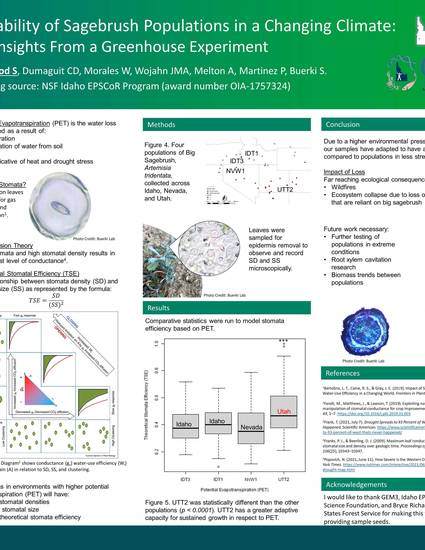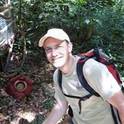
The western U.S. has been experiencing the highest levels of drought and heat not seen in more than a century as a direct result of human influence. Big sagebrush- Artemisia tridentata- plays a pivotal role in the functioning of our local ecosystem as a keystone species and its dramatic decline at the population level is alarming.
This project aims at predicting the adaptive capacity of sagebrush populations to cope with climate change by focusing on studying water use efficiency by way of stomata density and size. We hypothesize that plants pre-adapted to drought will display high density and low stomatal size to minimize transpiration while maximizing growth.
Seeds from four sagebrush populations in Idaho, Nevada, and Utah representing contrasting climatic conditions (along an evapotranspiration gradient) were collected and grown in a common garden. Stomata size and density were determined by removing the leaf epidermis and analyzing microscope images. Theoretical fitness was assessed with comparative statistics to determine water use efficiency against potential evapotranspiration (PET). We found the Utah population had significantly higher density and lower stomatal size compared to other populations, which translates to the theoretical traits desired for sustainability in higher PET environments. Across all our populations, we saw a variety of traits at the individual level, suggesting that some proportion of each population are pre-adapted.
Other researchers in ecology and evolution can utilize our work to more clearly assess sagebrush fitness. Future restoration efforts can use our findings to select for better adapted seedlings and conserve our natural ecosystem.
Available at: http://works.bepress.com/sven-buerki/35/
